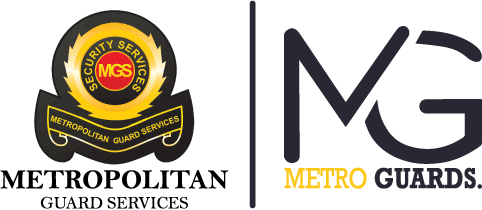In today’s fast-paced and dynamic work environment, the safety and well-being of staff in Melbourne are of paramount importance. Employers have a moral and legal obligation to ensure that their employees work in a safe and secure environment. In this comprehensive guide, we will explore the role of safety personnel in Melbourne and how they contribute to a safer workplace.
Safety personnel play a crucial role in ensuring the well-being of staff in Melbourne. They are the unsung heroes who work behind the scenes to make sure employees return home safely after a day’s work. In this article, we will delve into the world of safety personnel, understanding their roles, the legal framework that supports them, and how they contribute to a culture of safety in different industries.
Understanding the Role of Safety Personnel
What Do Safety Personnel Do?
Safety personnel are responsible for identifying and mitigating workplace hazards. They conduct risk assessments, develop safety protocols, and ensure that all employees follow safety guidelines.
Qualifications and Training
To become safety personnel, individuals often require certifications in occupational health and safety. They undergo rigorous training to stay updated on the latest safety standards.
The Legal Framework
Occupational Health and Safety Act
The Occupational Health and Safety Act is the cornerstone of workplace safety in Melbourne. It outlines the rights and responsibilities of employers, employees, and safety personnel.
WorkSafe Victoria Regulations
WorkSafe Victoria Regulations provide specific guidelines for various industries, ensuring that employers adhere to safety standards unique to their sector.
Safety Personnel in Different Industries
Safety personnel are versatile and can be found in various sectors, including construction, healthcare, and manufacturing. They adapt their skills to the specific needs of these industries.
Risk Assessment and Management
Identifying Workplace Hazards
Safety personnel are experts at identifying potential hazards. They assess the workplace for dangers and propose ways to eliminate or reduce them.
Developing Safety Protocols
Once hazards are identified, safety personnel work on creating safety protocols and guidelines that employees must follow to minimize risk.
Emergency Response and First Aid
Preparedness and Training
Safety personnel play a vital role in preparing employees for emergency situations. They conduct drills and provide first aid training.
Role in Crisis Situations
In times of crisis, safety personnel are at the forefront, ensuring that employees are safe and well-informed about the situation.
Promoting a Culture of Safety
Employee Engagement
Safety personnel encourage employee engagement in safety initiatives, making them an integral part of the process.
Reporting Mechanisms
They establish reporting mechanisms for employees to report safety concerns or incidents, ensuring a transparent system.
Safety Personnel as Educators
Conducting Workshops and Training
Safety personnel often conduct workshops and training sessions to raise awareness about safety issues and best practices.
Raising Safety Awareness
By educating employees, safety personnel contribute to a culture of safety, making it a collective effort.
Challenges Faced by Safety Personnel
Balancing Safety and Productivity
Safety personnel often face the challenge of maintaining safety without impeding productivity.
Dealing with Non-Compliance
Dealing with employees who do not comply with safety guidelines can be a daunting task for safety personnel.
The Advantages of Having Safety Personnel
Reduced Accidents and Injuries
One of the primary advantages is a significant reduction in workplace accidents and injuries.
Boosted Employee Morale
Employees feel safer and more valued when safety personnel are actively present.
How to Hire the Right Safety Personnel
Qualities to Look For
When hiring safety personnel, employers should look for qualities like attention to detail, communication skills, and a strong sense of responsibility.
Interview and Selection Process
The selection process should be rigorous to ensure that the right candidate is chosen for this critical role.
Case Studies: Success Stories
Real-World Examples of Safety Personnel Impact
Examining case studies can provide real insight into how safety personnel have made a difference in various organizations.
The Cost of Ignoring Safety Personnel
Financial Implications
Ignoring safety personnel can result in significant financial losses due to workplace accidents and legal penalties.
Reputational Damage
Companies that neglect safety measures can suffer severe damage to their reputation.
Conclusion
Safety personnel are the backbone of workplace safety in Melbourne. They ensure that employees go home safely and contribute to a culture of safety that benefits both employers and staff. Investing in safety personnel is an investment in the well-being of your workforce and the prosperity of your organization.
Frequently Asked Questions (FAQs)
Q: How do safety personnel contribute to workplace safety?
A: Safety personnel identify hazards, develop safety protocols, and ensure that employees follow safety guidelines, ultimately reducing workplace risks.
Q: What are the legal obligations of employers regarding safety personnel?
A: Employers must hire qualified safety personnel and provide them with the necessary resources to maintain a safe workplace, as outlined in the Occupational Health and Safety Act.
Q: Are safety personnel only required in high-risk industries?
A: No, safety personnel are essential in all industries to maintain a culture of safety and protect employees.
Q: How can I find the right safety personnel for my organization?
A: Look for candidates with the right qualifications, attention to detail, and a strong commitment to safety during the selection process.
Q: What are the consequences of neglecting workplace safety?
A: Neglecting safety personnel and safety measures can lead to financial losses, injuries, and damage to a company’s reputation.


